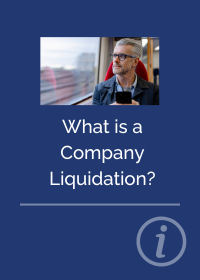
We’re here to help. Contact us for a free confidential discussion.

We’re here to help. Contact us for a free confidential discussion.
Need advice about Company Liquidation now?
How we can help
Fully licensed Insolvency Practitioners
HMRC debt advice and support
Help with pressure from creditors
Affordable solutions
Direct contact with our senior team from the outset
Contact us for free confidential advice on your exact situation
As an insolvency and restructuring practice, our Insolvency Practitioner’s have many years of experience supporting businesses. We work with business owners and directors to ensure that commercially driven results are achieved and take a proactive and pragmatic approach towards tackling business challenges.Please complete the form below to help us direct you to the appropriate person.
Insolvency Practitioners
Colin Wilson

Mark Boast

Jo Rolls

What is Company Liquidation?
A Creditors’ Voluntary Liquidation (CVL) is the more specific term used for the process of liquidating a company in the business world. This procedure is a common process used to close a business when the company is insolvent and cannot pay its debts.
A CVL is a director led process whereby the shareholders place a company into liquidation to facilitate an orderly wind up of the company’s affairs. The decision to initiate a CVL process is usually when the company has run out of cash, it is unable to pay its debts, or the directors believe that the business is no longer viable. The typical business challenges that we see when we are called in include:
• The Company has run out of cash
• The Company cannot pay its debts on time
• Creditors are threatening legal or bailiff action to recover debts
• The services and/or products sold by the Company appears to no longer be viable
There is also a compulsory liquidation which is done through a court process, usually initiated by a creditor, where a Winding Up Order is made.
If you have a concern in relation to a court issued Winding Up Order or a legal document you have received, do not delay, contact us now.
What is the Liquidation process?
1. You will need to instruct a licenced Insolvency Practitioner as this is the only person who can act as the Liquidator.
2. Information will need to be provided so that we can prepare a report to creditors and a statement of affairs (a snapshot of the Company’s assets and liabilities) can be drafted. At Opus, we provide you with an easy to complete questionnaire to assist in this process.
3. A shareholders meeting is convened at which the shareholders to pass certain resolutions pertaining to the Liquidation.
4. At the same time, a creditors meeting is also convened for the creditors and for the purposes of, amongst other matters, confirming the appointment of the shareholders chosen insolvency practitioner.
5. The creditors meeting is ordinarily held virtually, but creditors who meet the criteria (either 10% by value of creditors or 10% in total number of creditors or 10 individual creditors) can request a physical meeting.
6. Following our appointment, the claims of the employees who were made redundant are processed (whilst former employees can claim pre-Liquidation, the claims cannot be processed until the Company is in Liquidation).
7. Generally speaking, and as long as the required information is provided quickly, the Company can be in Liquidation within two to three weeks from the date of instruction.
How much does a Company Liquidation cost?
The cost of a Liquidation depends on the complexities of the case and primarily will depend on:
• The number of creditors
• How many employees there are
• Whether there is any legal or bailiff action pending
• The assets that need to be dealt with
• The structure of the Company
However, once you have spoken to one of our Team, we will be able to provide you with an exact price for your business.
How we've supported other business owners
From the outset, we make sure we fully understand your business, its market, your processes, problems and its trading history – each company we work is unique so it’s important to gain a clear understanding of your business and its challenges.
Let's take a pragmatic approach towards tackling your business challenges
Liquidation isn’t always the right procedure for a business. However, action is needed to identify the clear position of the Company, and then what options are available depending on what you want to do, what is possible and the legal obligations for the Directors of the business.

